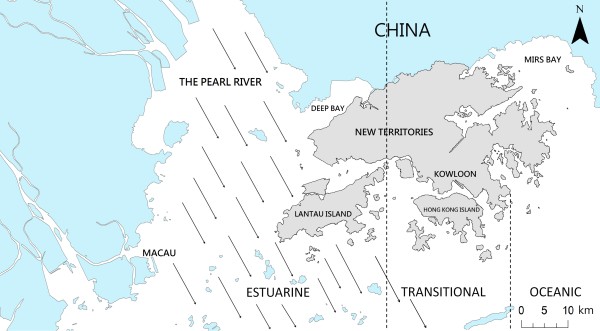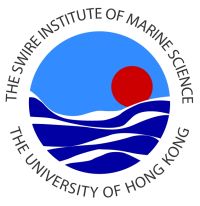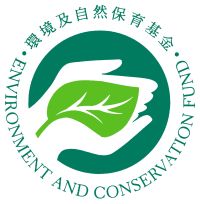| Intro | | Search taxa | | Taxon tree | | Sources | | Match taxa | | Statistics | | Editors | | Log in |
|
Current number of accepted species: 5,408 The Hong Kong Register of Marine Species (HKRMS)About the Hong Kong marine environmentHong Kong is a Special Administrative Region (SAR) of China and has ~1,651 km² of territorial waters and a relatively long coastline of 1,189 km (equivalent to the coastline of England and Wales), largely due to the presence of over 260 islands. Located at 22° N and 114° E, Hong Kong lies just within the tropics and is influenced by a strongly seasonal climate as a result of changes between the northeast and southeast monsoons, which create a climate of cold, dry and almost temperate winters and hot, wet, tropical summers. Associated with the monsoonal climate, Hong Kong experiences seasonal changes in the dominance of three ocean currents, the Taiwan, Hainan and Kuroshio currents. Hong Kong's geographic location and seasonal shifts in monsoons and ocean currents therefore create an extremely dynamic environment and contribute to the mix of tropical and temperate flora and fauna found in Hong Kong.The western waters of Hong Kong, under the influence of the Pearl River discharge from mainland China, are estuarine and as a result Hong Kong's waters can be divided into three hydrographic zones: the estuarine west, oceanic east and a central transition zone. Hong Kong waters, as elsewhere, can also be divided into the intertidal, sub-littoral and continental shelf zones. The intertidal zone is extremely diverse, with rocky shores focused on granitic and volcanic promontories that are interspersed with deep wave-cut bays. There is also a rich variety of sandy and muddy shores in deeply cut inlets of Hong Kong, with the most protected areas supporting mangrove stands. In the lower shore to sub-littoral, soft shores can support seagrasses and coral communities can be found in rocky sub-littoral areas, whereas the continental shelf is mainly comprised of muddy sands. The influence of the monsoonal climate, complex geology, seasonal variation in oceanic currents, proximity to the Pearl River, long drowned coastline, and diverse ecological habitats all interact to influence and mould the highly diverse marine biota in Hong Kong.

About HKRMSThe HKRMS aims to provide a globally accessible platform for taxonomic information of marine species recorded in Hong Kong waters, for research purposes, but also for biodiversity education and the sustainable management of marine resources. This work was funded by the Environment and Conservation Fund (ECF) of the Hong Kong SAR Government and led by The Swire Institute of Marine Science, The University of Hong Kong. The database has been checked by taxonomic experts of the World Register of Marine Species (WoRMS) as a procedure of quality assurance.
Editorial BoardThe HKRMS editorial board consists of taxonomic and ecological experts. The editors do not directly have the authority to modify taxonomic information stored in the register but they may collaborate with WoRMS taxonomic editors to effect changes.
HKRMS Executive Committee
CitationUsage of data from the Hong Kong Register of Marine Species in scientific publications should be acknowledged by citing as follows:
Individual pages are individually authored and dated. These can be cited separately: the proper citation is provided at the bottom of each page. DisclaimerHKRMS is undoubtedly not complete and contains errors as in other Regional Species Databases (RSD) in WoRMS, but it is an evolving process where species are continuously updated (species may later be discovered to be misidentified or recognized as synonymous with other names from time to time) and new species are added. In collaboration with WoRMS taxonomic editors, the HKRMS editorial board intend to maintain a fast update of the database. The HKRMS editorial board cannot be held responsible for any errors or misuse of data contained in this register. Suggestions and comments from users are very welcome. If you come across any incorrect or incomplete information, or you are willing to contribute to this initiative, please contact Juan Carlos Astudillo, chief editor. |


